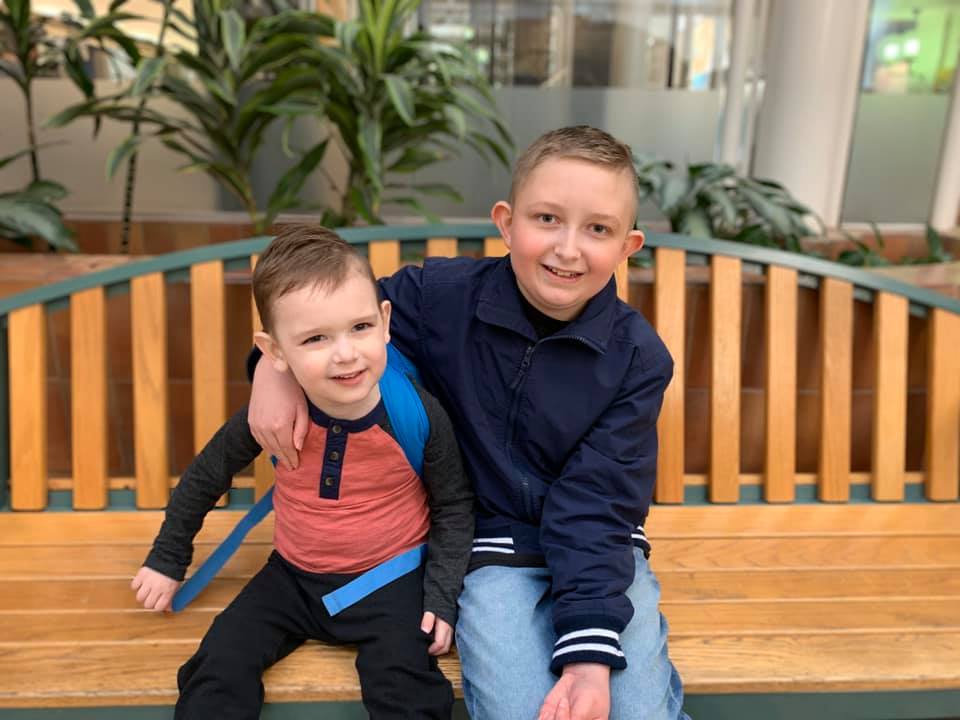
We want to tell you a little bit about Big Gifts for Little Lives, and why we chose to support this cause with the 1st Annual Gentry Home Builders Golf Tournament.
It all started with one of those curveballs that life can throw at you, one of those "that-could-never-happen-to-me" moments, ....
 |
George.At 9-months-old, George got his gift and underwent a heart transplant. He did incredibly well at first, and carried on with his new heart for a year and a half. But then his body began to reject his gifted organ and he developed Antibody Mediated Rejection and developed CAV (cardiac allograft vasculopathy). CAV is one of the leading causes of failure in heart transplants and is not fully understood why it occurs. At 3-years-old, the now toddler was enlisted again on the heart transplant waiting list. In January 2020 he got his gift, and he received his second heart transplant. So far, he is doing well and his body has not had any rejection. |
 |
Austin. |
Big Gifts for Little Lives.
During the painful months that followed George's diagnoses while he waited for his new heart, his mother wanted to take action. She organized an event to generate more awareness about organ donation and to raise money for pediatric heart transplant research for the Stollery Children's Hospital. It started with a 5 km run and walk, silent auction and family event held in Edmonton's Rundle Park. The fundraiser brought in a whopping $57,242.
The following year, George's mother Lindsey, connected with Austin's mother Christine on a Facebook support group for pediatric transplant parents. They became friends, and decided to join forces in their continued fight to raise awareness and funds for critical pediatric transplant research through Big Gifts for Little Lives.
The money they raise goes towards grants for the Canadian Donation and Transplantation Research Program, as well as transplant research in general, and the Stollery Children's Hospital Foundation helps Lindsey and Christine to facilitate supporting this research across Canada. Their goal is to correct the idea that once a transplant takes place, all issues are solved.
For many transplant recipients, a new organ is not a cure. A typical donated heart has a lifespan of between 15 and 20 years.
Rejection, infection and kidney failure can have a huge impact on post-transplant mortality rate. There is a lot of research that still needs to happen to raise the longevity statistics for heart transplant patients.
The Stollery Children's Hospital.
We are incredibly fortunate to have the Stollery Children's Hospital in our own back yard. Since 1986, it has offered heart transplantation to children and infants in terminal heart failure for congenial heart disease, cardiomyopathy and children with inflammatory heart disease. The hospital serves as a hub for pediatric transplants for 10 million people spread out through western Canada. It's one of 10 large centres in North America of its kind. In an average year, the Stollery Children's Hospital sees approximately 7,000 patients with congenital heart problems, performs about 15 - 20 heart transplants and provides ongoing care for 100 pediatric heart transplant recipients.
Here is an update from Big Gifts for Little Lives with one of the studies they've helped to support:
"Investigating the role of metabolism in predicting outcomes in Pediatric transplant patients:
For children with kidney or heart failure, a transplant is life-saving. But living with a transplant means depending on medication that block the immune system from damaging the organ – a process referred to as rejection. But everyone is different, and the medications that prevent rejection also have side effects. Some kids seem to have much more risk from rejection than others, and others would benefit from less medication – but right now we can predict who needs more and who needs less.
We think these differences may have to do with how sick they are at the time of the transplant. So a test before transplant that can tell us would allow us to improve how we prevent rejection, and avoid unwanted side effects from treatment. One way to tell how someone is doing is to look at their metabolism – which we can see in a blood test. We can look at hundreds of small substances that are part of normal metabolism, and use detailed math to discover patterns that are related to a high risk or a low risk for rejection. This is the testing we are doing for the study.
At present, we have assembled samples from children who have had heart and kidney transplants. We have collected detailed information on how they are doing after transplant, and we are sending samples now to be tested at “the Metabolomics Innovation Center”, which is a leading laboratory in Edmonton – a collaborator on the study. We expect to get early results back in the next 3 months, and from there we will be able to further refine what we are doing. Ultimately, we hope to test this out in a national study that helps us to get the best results for kids in Canada!"



